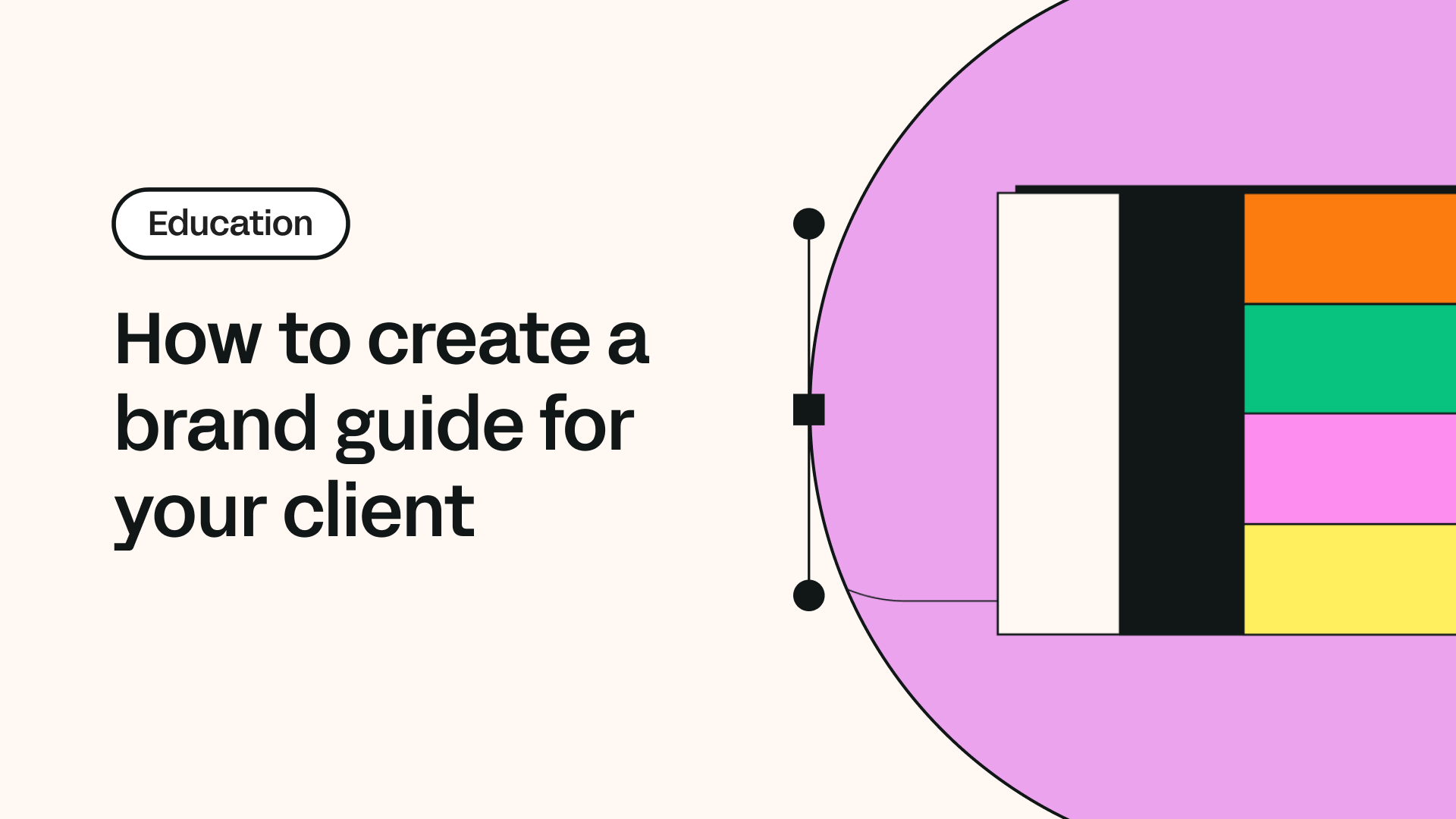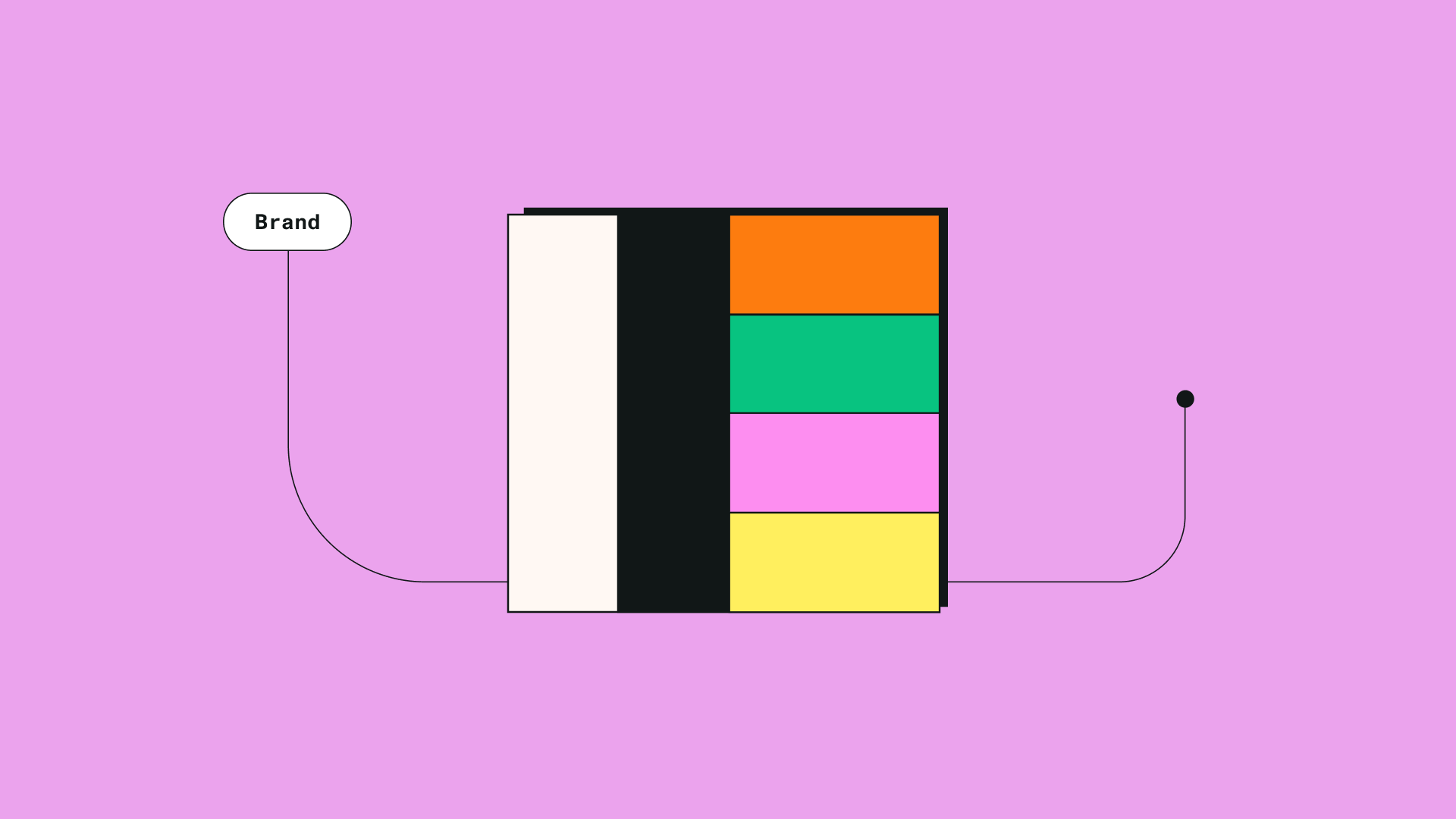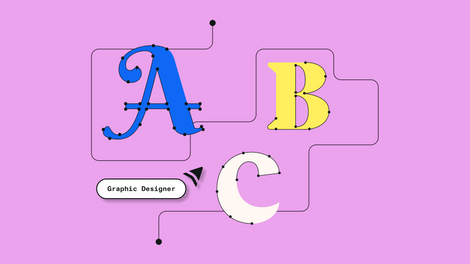A chimp in a postman’s hat. Mailchimp is one example of many companies that have managed to retain a sense of their original brand even after acquisitions and rebranding. It’s all thanks to a great brand guide.
McDonald's.
H&M.
Volkswagen.
Isn't it crazy how one word can trigger an entire set of imagery and feelings in you?
If you had to break down each of these highly recognizable brands into the visual elements that came to mind, you would be left with some of the key components that make up each brand.
And, it's by no accident.
Brands don't just happen—they're designed, and that's exactly what a brand guide is for.
A lot of work precedes a brand guide, but it can also inform how a brand is developed. It depends on what stage the company is in when you start working with them.
If an existing brand guide is not helpful for you to be able to start designing for a client, you might need to update their brand guide for them and include that as part of your design work. Brand guides are graphic design products and shouldn't be done for free—make sure you bill this as a separate item!
We're going to take a quick look at what exactly a brand guide is for before deep-diving into how to create one for your client.
Jumpstart your ideas with Linearity Curve
Take your designs to the next level.
What exactly is a brand?
A brand is the concept people have about a company and its products and services.
Companies shape these perceptions by creating a brand identity, including visible symbols such as the company logo, slogans, color palette, packaging, and images.
There are also other intangible basic brand elements such as the voice and messaging, the vision and values of the company, and customer experience and sentiment.
A brand is so much more than a well-designed business card and email signature – it stretches beyond promotional materials to news releases, blog content, and video projects.
The best examples of branding include when your brand name becomes synonymous with the product or service you're selling. Think about:
- "Google it."
- "Can I have a coke with that?"
- "Did you steal my Tupperware?"
- "Yes, we serve Seltzer water."
- "Let's go play some Frisbee!"
- "That was a real Kleenex moment."
- "I'll prepare a Powerpoint for the meeting."
It makes a lot of sense, then, why most companies opt to trademark their brand name, logo, and slogans.
The key to a great brand is consistency across all your messages and customer interactions, and that's what a brand guide is for.
What is a brand guide and how to use it
Also known as a brand style guide, brand bible, or brand book, a brand guide is a detailed document containing everything that makes up a particular brand.
A brand guide is very granular and handles information about where to place the company logo and other graphic elements, the spacing of elements, what kinds of stock photos may be used, and the terms to be used when referring to products, services, and people.
In essence, it's your client's brand rulebook.
- The document where all of the above is set out in plain, visual language.
- The guidelines for how the brand is put forth on various multimedia platforms.
- It keeps the style and messaging consistent everywhere.
- It's also where you'll find the brand's fonts, logo files, color codes, etc.
Often, a brand guide will come with a folder of assets. Otherwise, you must request the assets from the company.
Not recommended: Don't try and use the existing brand guide to redesign company assets and waste your precious time! We're saying this because we know you've done it at least once (and so have we).
Instead, if the client's unable to provide the assets you need in an acceptable format, offer to create these for them as a separate design project.
Elevate Your Branding with Linearity
Discover how Linearity can transform your branding strategy. Learn to create distinctive brand assets that resonate with your audience and stand out in the market.
Recommended: Read the entire brand guide all at once to get an overall sense of the brand and formulate your design ideas from there.
How to create a brand guide for a client
We're not going to beat around the bush—creating a brand guide for a client will probably have a long approval process.
This is because it personifies the brand and will determine how people receive it in the future.

Creating a brand guide can also turn out to be one of the more fun creative projects you do because you get to build the brand from the ground up in close collaboration with the client and make technical design decisions.
Do's and don'ts of brand guides
- Do ask the client many questions about their company, products, services, vision, likes, and dislikes.
- Do collaborate with the client's teams (sales, marketing, customer support, web development, executive).
- Do your market research to find out who the target audience is and what clients are saying.
- Don't make it too flashy and overcomplicated. It's a visual communication document and should be clear, concise, and appealing.
- Don't be too quick to follow a standardized formula – listen carefully to your client's needs and be innovative with your approach. The way the brand guide is handled also says a lot about the client's brand.
- Don't ever plagiarize. It's good to look at examples and templates and keep the client's competitors in mind, but stealing someone else's ideas or work is never cool.
Key components of a brand guide
Remember it's all about what the client needs! Some brand guides are one-pagers, others a full presentation deck.
Here's a general list of what you need to include:
Company introduction
Where did the name come from, what is the brand about, and what do they sell? What are the most important values that define the brand?
Logo
Official company or product logo and secondary logos for different applications (e.g., a flat white one for dark backgrounds, a flat navy blue one for light backgrounds, etc.).
Colors
Color schemes including the primary and secondary brand colors together with their digital color codes (Hex, RGB, and CMYK). Some designers color-match Pantones as well.
Fonts
The font and any alternate typefaces that may be used. Explain how text is to be placed, and whether light, italic, and bold versions are permissible. Steer clear of common system fonts!
Icons and buttons
Icon sets, button colors, and what calls to action should look like.
Write-up
A write-up that describes the tone or "voice" of the brand, the terms used for things and people, how punctuation and emoji are used, and how various graphic elements may be placed in combination with text.
This list could go on! It all depends on how much detail the client needs.
Images
What an acceptable image source is, as well as some examples with descriptions of images that may be used.
Use cases
Examples of print materials, social media, presentations, and packaging to show the application of the design rules in action.
Make the design rules explicit, e.g., "place the logo at the top left corner with 20px padding all around".
Brand guide tips
This isn't our first rodeo. We'd love to share some tried-and-tested tips that will help you build an effective brand guide:
- Consider using social listening tools to understand what people are already saying about your client. The client's vision and values must reflect the truth of what customers are experiencing.
- Consider the target audience, as well as inclusivity. The messaging should be accessible, not exclusive.
- Be forward-thinking. Look at current design trends and their trajectory, and focus on what's coming next. This will put your client's brand one step ahead of its competitors.
- Limit the number of elements to make the brand's message clearer. Remember that it's a reference document for everyone – your client, your team, as well as anyone else who needs to use the client's branding.
- Include your own branding in the brand guide. This document will live on for some time, and leaving your logo and contact details discreetly in the brand guide is not only a testament to the quality of your work but also keeps the door open for future projects.
- Prepare the brand guide for export in multiple formats: A slide deck for presentations, a PDF for email and print, and a web page for external stakeholders. You might even want to provide the design files to make it easy to copy-paste elements or to expand the brand guide at a later stage.
How to do a rebrand (TL;DR version)
Sometimes, you'll be tasked with reassessing a client's brand and creating a new style guide. Although the steps and tips above can be followed for a rebrand project, it's a little different from starting from scratch.
With a rebrand comes extra considerations about how to smoothly transition the brand.
Start
Before you start, ask the client why they're changing their brand.
More often than not, a rebrand is not needed – simply tweaking what they have to suit the audience better or optimize conversions will suffice.
Ask your client what exactly they want to achieve and how they think the potential rebrand will help them achieve this.
Once you've assessed what they need, you can steer them in the right direction (which is often away from a full-blown rebrand).
Middle
If you've assessed that a rebrand would be a great move for the client, then it's time to go to the drawing board.
Hopefully, the client consulted their sales and marketing teams before approaching you for a rebrand, which would mean there are some solid metrics to back the decision.
If there's no evidence provided by these teams, you'll need to collaborate very closely with them to plan and design the rebrand.
Once you put pen to paper, don't make the rebrand too extreme (unless it's really, really necessary). It's very rare that a rebrand of an established company will be a total pivot. You might want the new brand to be fresh and innovative, but a 180-degree change will confuse loyal customers.
Consider the following:
- Are the company's vision and values still relevant? If not, these need to be reworked by the client's teams.
- Is the target audience still the same? If not, remove anything that's part of the existing brand that doesn't fit the new audience.
- Should the colors and any other defining elements stay the same? If so, you can start working on ideas to bend and mold these to fit the new brand concept better.
Finish
Brand consistency is the key to building a loyal customer base. That's another reason why a brand guide is an essential document – to keep going back to the company's true north.
In this sense, it's important not to change it up too often, and if changes to the brand guide are needed, these should be brought through in every aspect of the look and messaging.
Ready to create brand assets that pack a punch?
Visit our Academy for free marketing brand design courses.
Brand guides should not be open, collaborative documents. Changes should be internally suggested, voted up, and the most relevant ones requested from the designer (that's you!).
Keeping to these principles after a rebrand will make it easier to measure success and make slow changes accordingly.
5 examples of simple, effective brand guides
There are some amazing brand style guides made available online by companies that are admired worldwide.
An existing style guide can be used for inspiration and general layout ideas, but we're not suggesting that any of their content should be copied!
- Drift made its brand book available to the public and it's been an inspiration for others with its personality, clarity, and brevity.
- WhatsApp has an online brand guide for its partners to use.
- Mailchimp recently expanded to be more than an email automation platform and was also acquired by Intuit, which required a rebrand. They made their updated brand guidelines available on a webpage, but they also have a separate page for their brand assets.
- Patagonia is another inspiring, long-standing brand that understands its target audience well. Their branding guide is only a few pages long but gives a clear overview of the company's goals and style guide.
- Buffer is a social media automation tool with a famously transparent payment structure. Their brand kit follows suit in its minimalist, clear approach.

Branding trends: how brands are changing
We mentioned earlier that you should be forward-thinking and plan one step ahead.
We're keeping our eyes on a few upcoming design trends that we think will change how brands are shaped in the near future.
- Mailchimp's content style guide, though something different from a brand guide yet closely linked, focuses on what language to use in content to make sure their messaging is as inclusive as possible. This is something that we foresee more companies incorporating into their brand voices.
- Brands are becoming more flexible, because of the rising prevalence and importance of user-generated content. Users are punting brands they love with their own personal brand flavor and within other branded products such as social media.
- Personality is back. The internet is inundated with run-of-the-mill webby themes, and websites are all starting to look the same. How many companies pick a premade logo and simply add their colors? We are seeing a growing trend in adding interactivity, quirkiness, avatars, humor, fancy fonts, dated graphics, and even fun cat pics.
- More imaginative and poetic. Brands are aiming to inspire others again, not simply race to gain as much revenue as possible with little overhead expenses. Just look at Linearity Curve (formerly Vectornator) – we’re pretty proud of being the most intuitive and precise illustration software in the galaxy! Even though leisure space travel is not a reality yet, we hope it creates a sense of wonder and makes you dream big.
- Pop culture. Since brands are functioning as individuals on social media, running 'drops', etc., they're often incorporating popular culture into their brands as well. Doing this makes the brand more relevant and relatable to its audience.
Wrapping up
Branding is pretty fun and exciting. Creating a new brand from the ground up or collaborating to rebrand an existing company is an excellent experience for any graphic designer.
If you're looking for a powerful vector design tool to use in your graphic design work, look no further than Linearity Curve. It's a free design tool that will let you create amazing branded marketing content for yourself and your clients.
There are many ways to skin a brand guide, from one-pagers in a table format to elaborate presentations and web pages with animated elements and beautiful designs. It all comes down to what your client needs (and their budget, of course).
If you want to create brands that will continue to inspire, you need to keep an eye on current trends and think one step ahead.
We hope our guide to brand guides will help you navigate client work with confidence!
Jumpstart your ideas with Linearity Curve
Take your designs to the next level.


Share this!
Sharné McDonald
Sharné is a contributing writer to the Linearity Blog. She has 10+ years' experience in graphic design and marketing and holds a Master's degree in Art Education.


:quality(75))
:quality(75))



:quality(75))

:quality(75))
:quality(75))



